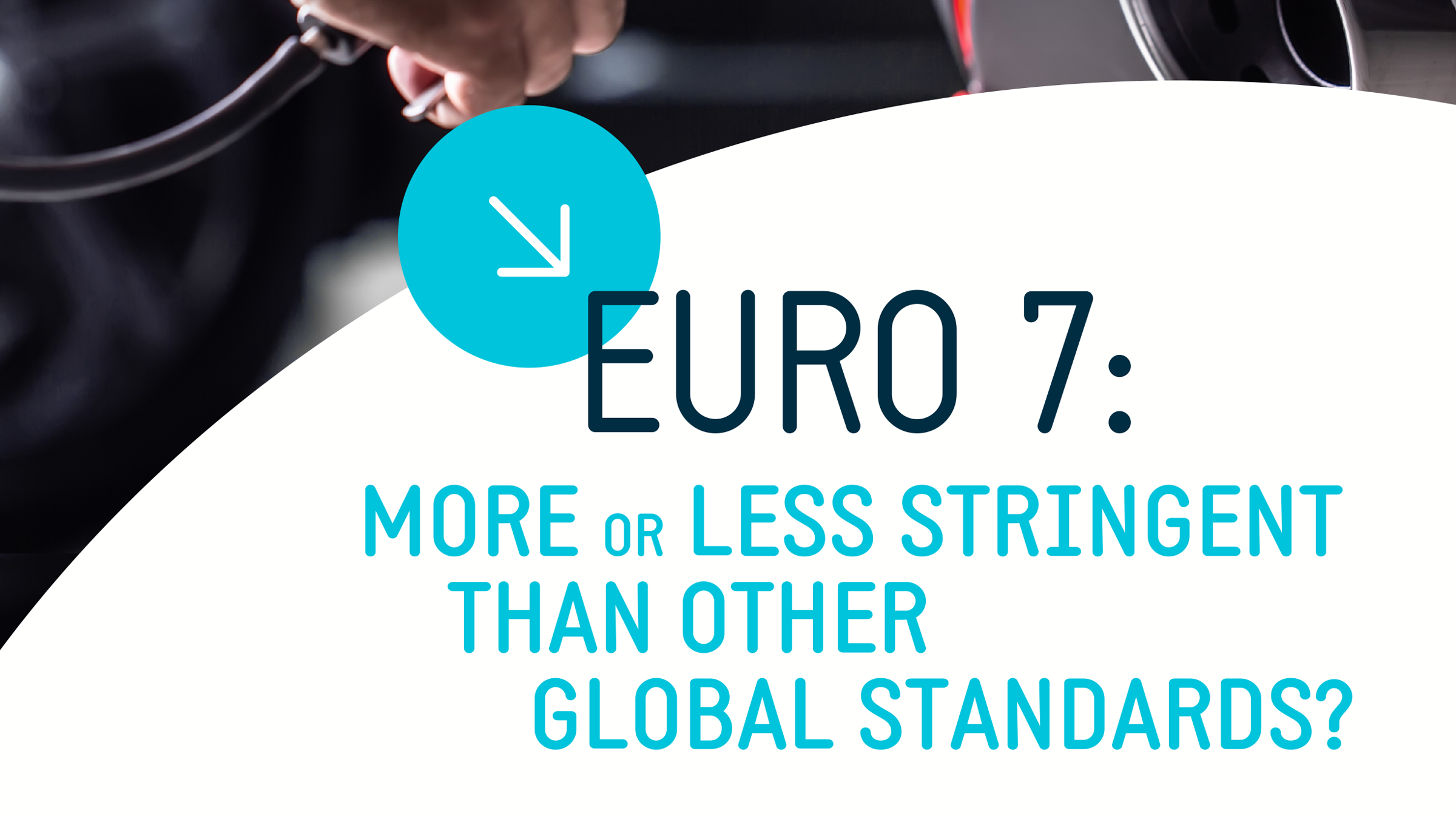Fact sheet #5 – Euro 7: More or less stringent than other global standards?

The EU already has one of the most comprehensive and stringent approaches to pollutant emissions globally. State-of-the-art technology means that exhaust emissions are barely measurable.
The latest standards – Euro 6/VI – were introduced from 2014. Since then, extra steps have been taken as part of Euro 6 for cars and vans to further reduce nitrogen oxides (NOx) and particle pollutant emissions under real driving conditions. Emissions measured on the road using portable emission measuring systems (PEMS) are now at a barely measurable level. Euro VI strengthened particle number (PN) limits and expanded the test conformity procedures, also delivering low emissions.
China, Japan, and the United States also have regulations to reduce vehicle emissions, but they are not as strict as those in the EU.
For example, the US approach is less stringent than the EU’s in a number of instances:
- Emission limit values achieved by vehicles in the US are measured under controlled lab tests, not under the variability of on-road driving.
- Limits are based on the average number of new cars sold by manufacturers, rather than applying to every single vehicle sold, as is the case in the EU.
- The US has no limits for emissions of ultra-fine particles.
The severity of pollutant emissions standards is about much more than numbers on paper or tests in a lab. Its effectiveness should ultimately be measured by how a vehicle performs on the road.

